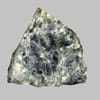Dacite and Larvikite
Definition
Definition
Dacite is a volcanic igneous rock which is rintermediate in composition between andesite and rhyolite
Larvikite is an igneous rock and a variety of monzonite, notable for the presence of thumbnail-sized crystals of feldspar
History
Origin
Romania and Moldova, Europe
Larvik, Norway
Discoverer
Unknown
Unknown
Etymology
From Dacia, a province of the Roman Empire which lay between the Danube River and Carpathian Mountains where the rock was first described
From the town of Larvik in Norway, where this type of igneous rock is found
Class
Igneous Rocks
Igneous Rocks
Sub-Class
Durable Rock, Soft Rock
Durable Rock, Hard Rock
Family
Group
Volcanic
Plutonic
Other Categories
Fine Grained Rock, Medium Grained Rock, Opaque Rock
Coarse Grained Rock, Fine Grained Rock, Medium Grained Rock, Opaque Rock
Texture
Texture
Aphanitic to Porphyritic
Phaneritic
Color
Bluish - Grey, Brown, Grey, Light to Dark Grey
Black, Brown, Light to Dark Grey, White
Maintenance
Less
Less
Durability
Durable
Durable
Water Resistant
No
Yes
Scratch Resistant
No
Yes
Stain Resistant
No
Yes
Wind Resistant
No
Yes
Acid Resistant
No
No
Appearance
Vesicular
Shiny
Uses
Architecture
Interior Uses
Decorative Aggregates, Entryways, Interior Decoration
Decorative Aggregates, Homes, Interior Decoration
Exterior Uses
As Building Stone, Paving Stone, Garden Decoration
As Building Stone, As Facing Stone, Garden Decoration, Office Buildings, Paving Stone
Other Architectural Uses
Curbing
Curbing
Industry
Construction Industry
As Dimension Stone, Construction Aggregate, for Road Aggregate, Landscaping
As Dimension Stone, Cement Manufacture, Construction Aggregate, for Road Aggregate
Medical Industry
Not Yet Used
Not Yet Used
Antiquity Uses
Artifacts
Artifacts, Monuments, Sculpture
Other Uses
Commercial Uses
Commemorative Tablets, Creating Artwork
Cemetery Markers, Commemorative Tablets, Creating Artwork
Types
Types
Footwall Dacite, Hanging wall Dacite, Tuff and Biotite Dacite
Quartz Monzonite, Syenite and Diorite
Features
Host Rock for Lead, Is one of the oldest rock
Available in lots of colors, Is one of the oldest rock
Archaeological Significance
Monuments
Not Yet Used
Used
Famous Monuments
Not Applicable
Data Not Available
Sculpture
Not Yet Used
Used
Famous Sculptures
Not Applicable
Data Not Available
Pictographs
Used
Not Used
Petroglyphs
Used
Not Used
Figurines
Not Yet Used
Used
Fossils
Absent
Absent
Formation
Formation
Dacitic magma is formed by the subduction of young oceanic crust under a thick felsic continental plate. Further, the Oceanic crust is hydrothermally altered as quartz and sodium are added.
Larvikite is a fine-grained, hard rock which is a type of metasomatite, essentially altered basalt. It forms with or without crystallization, either below the surface as intrusive rocks or on the surface as extrusive rocks.
Composition
Mineral Content
Amphibole, Apatite, Biotite, Feldspar, Garnet, Hornblade, Magnetite, Plagioclase, Pyroxene, Quartz, Zircon
Albite, Amphibole, Apatite, Biotite, Feldspar, Hornblade, Ilmenite, Magnetite, Muscovite or Illite, Olivine, Plagioclase, Pyroxene, Quartz, Sulfides, Titanite, Zircon
Compound Content
Ca, Fe, Potassium Oxide, Mg, Potassium, Silicon Dioxide
Aluminium Oxide, CaO, Iron(III) Oxide, FeO, Potassium Oxide, MgO, MnO, Sodium Oxide, Phosphorus Pentoxide, Silicon Dioxide, Titanium Dioxide
Transformation
Metamorphism
Yes
Yes
Types of Metamorphism
Burial Metamorphism, Cataclastic Metamorphism
Cataclastic Metamorphism, Impact Metamorphism, Regional Metamorphism
Weathering
Yes
Yes
Types of Weathering
Biological Weathering, Chemical Weathering, Mechanical Weathering
Biological Weathering, Chemical Weathering, Mechanical Weathering
Erosion
Yes
Yes
Types of Erosion
Chemical Erosion
Chemical Erosion
Properties
Physical Properties
Hardness
2-2.25
6-7
Grain Size
Medium to Fine Coarse Grained
Medium to Fine Coarse Grained
Fracture
Conchoidal
Not Available
Streak
White
White
Porosity
Less Porous
Less Porous
Luster
Subvitreous to Dull
Subvitreous to Dull
Compressive Strength
Not Available
310.00 N/mm2
2
Cleavage
Perfect
Not Available
Toughness
Not Available
Not Available
Specific Gravity
2.86-2.87
2.8-3
Transparency
Translucent
Opaque
Density
2.77-2.771 g/cm3
2.9-2.91 g/cm3
Thermal Properties
Specific Heat Capacity
0.92 kJ/Kg K
10
0.92 kJ/Kg K
10
Resistance
Heat Resistant, Impact Resistant, Pressure Resistant, Wear Resistant
Heat Resistant, Impact Resistant, Pressure Resistant
Reserves
Deposits in Eastern Continents
Asia
Not Yet Found
Not Yet Found
Africa
Not Yet Found
Not Yet Found
Europe
France, Greece, Romania, Scotland, Spain
Bulgaria, England, Germany, Norway, Romania, Switzerland
Others
Not Yet Found
Not Yet Found
Deposits in Western Continents
North America
USA
USA
South America
Argentina, Bolivia, Chile, Colombia, Ecuador, Peru, Venezuela
Argentina, Bolivia, Brazil, Chile, Colombia, Ecuador, Peru
Deposits in Oceania Continent
Australia
New Zealand, South Australia, Western Australia
New South Wales, New Zealand, Queensland, South Australia, Western Australia
All about Dacite and Larvikite Properties
Know all about Dacite and Larvikite properties here. All properties of rocks are important as they define the type of rock and its application. Dacite and Larvikite belong to Igneous Rocks.Texture of Dacite is Aphanitic to Porphyritic whereas that of Larvikite is Phaneritic. Dacite appears Vesicular and Larvikite appears Shiny. The luster of Dacite and Larvikite is subvitreous to dull. Dacite is available in bluish - grey, brown, grey, light to dark grey colors whereas Larvikite is available in black, brown, light to dark grey, white colors. The commercial uses of Dacite are commemorative tablets, creating artwork and that of Larvikite are cemetery markers, commemorative tablets, creating artwork.
|
||
|
||
|










